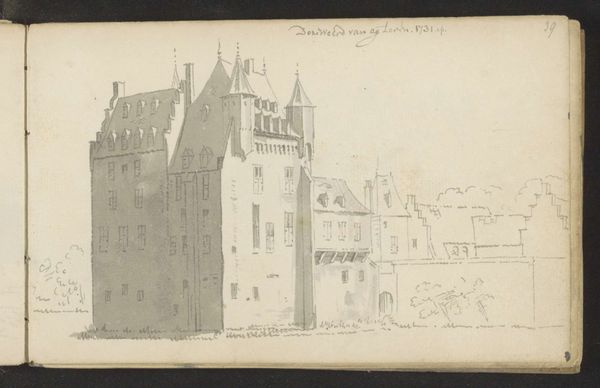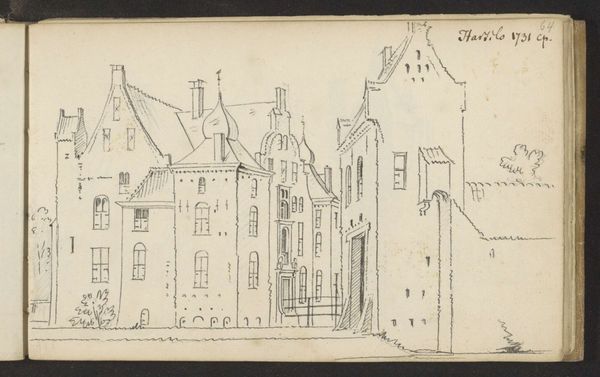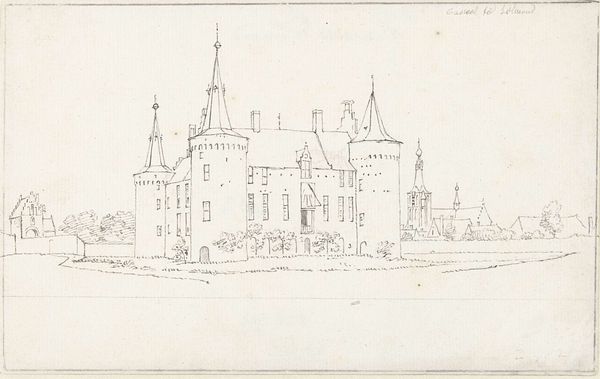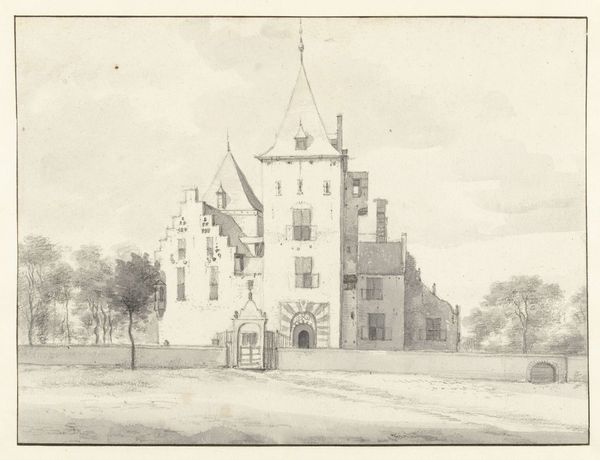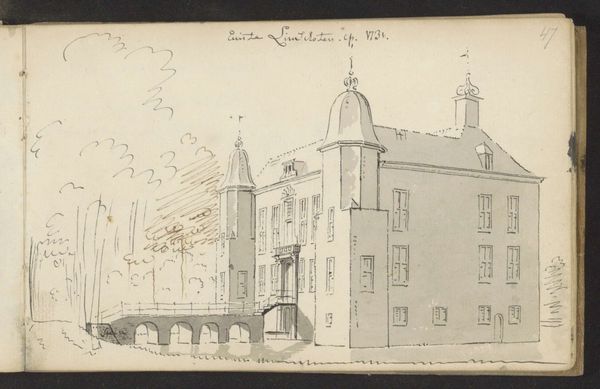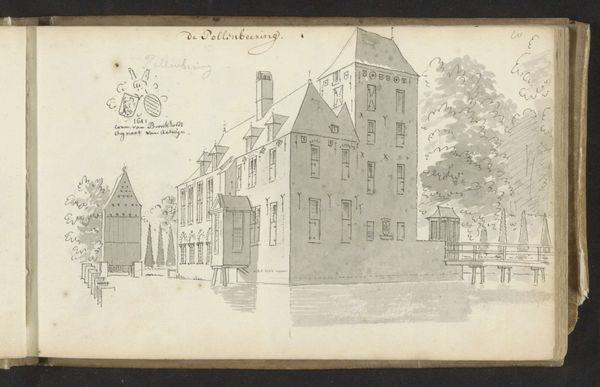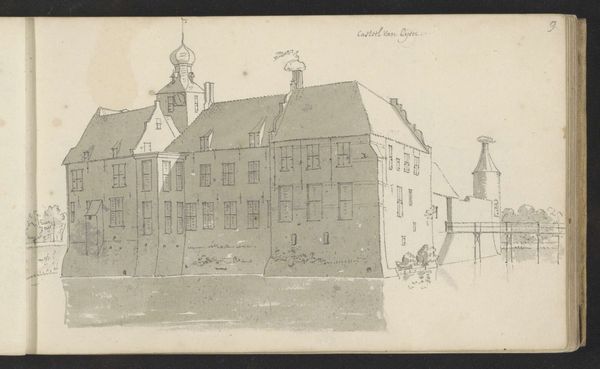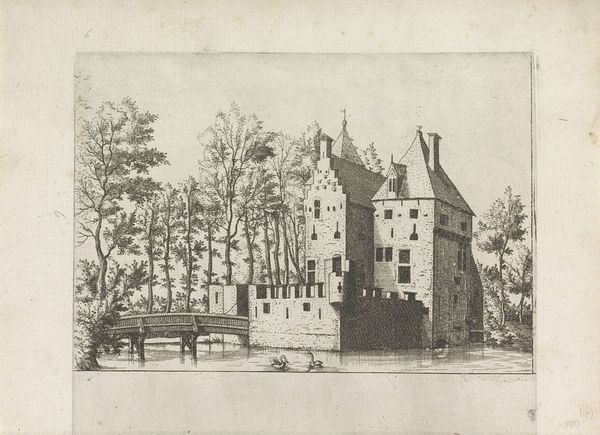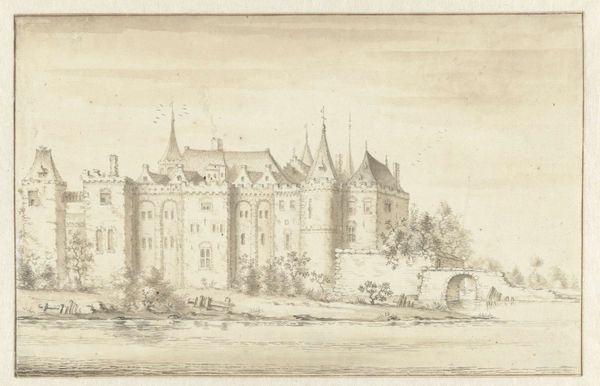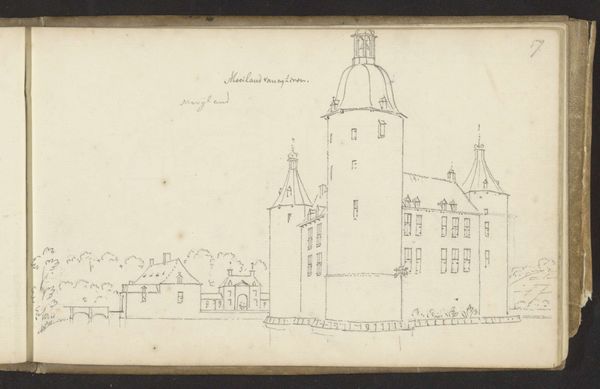
drawing, paper, ink, architecture
#
drawing
#
aged paper
#
dutch-golden-age
#
pen sketch
#
sketch book
#
landscape
#
paper
#
personal sketchbook
#
ink
#
sketchwork
#
pen-ink sketch
#
pen work
#
sketchbook drawing
#
storyboard and sketchbook work
#
sketchbook art
#
architecture
Copyright: Rijks Museum: Open Domain
This drawing of Kasteel Doorwerth was rendered in 1731 by Abraham de Haen the Younger. The castle looms, its architectural features heavy with symbolism, each stone a marker of power and history. Note the prominence of the towers and spires, motifs that stretch back through centuries, echoing in the ziggurats of ancient Mesopotamia and the minarets of Islamic architecture. These vertical thrusts are not mere decoration; they represent aspirations, reaching toward the divine or, in more earthly terms, asserting dominance. Consider how such symbols evolve. The castle itself, a fortress against the outside world, mirrors the human psyche's defenses. We build walls, both literal and metaphorical, to protect ourselves from perceived threats, a primal instinct reflected in the very stones before us. These are not just buildings but embodiments of collective memory, whispering tales of sieges, triumphs, and the relentless passage of time. These visual cues trigger deep-seated emotions, a subconscious recognition of our shared human story of struggle, resilience, and the enduring quest for security.
Comments
No comments
Be the first to comment and join the conversation on the ultimate creative platform.

